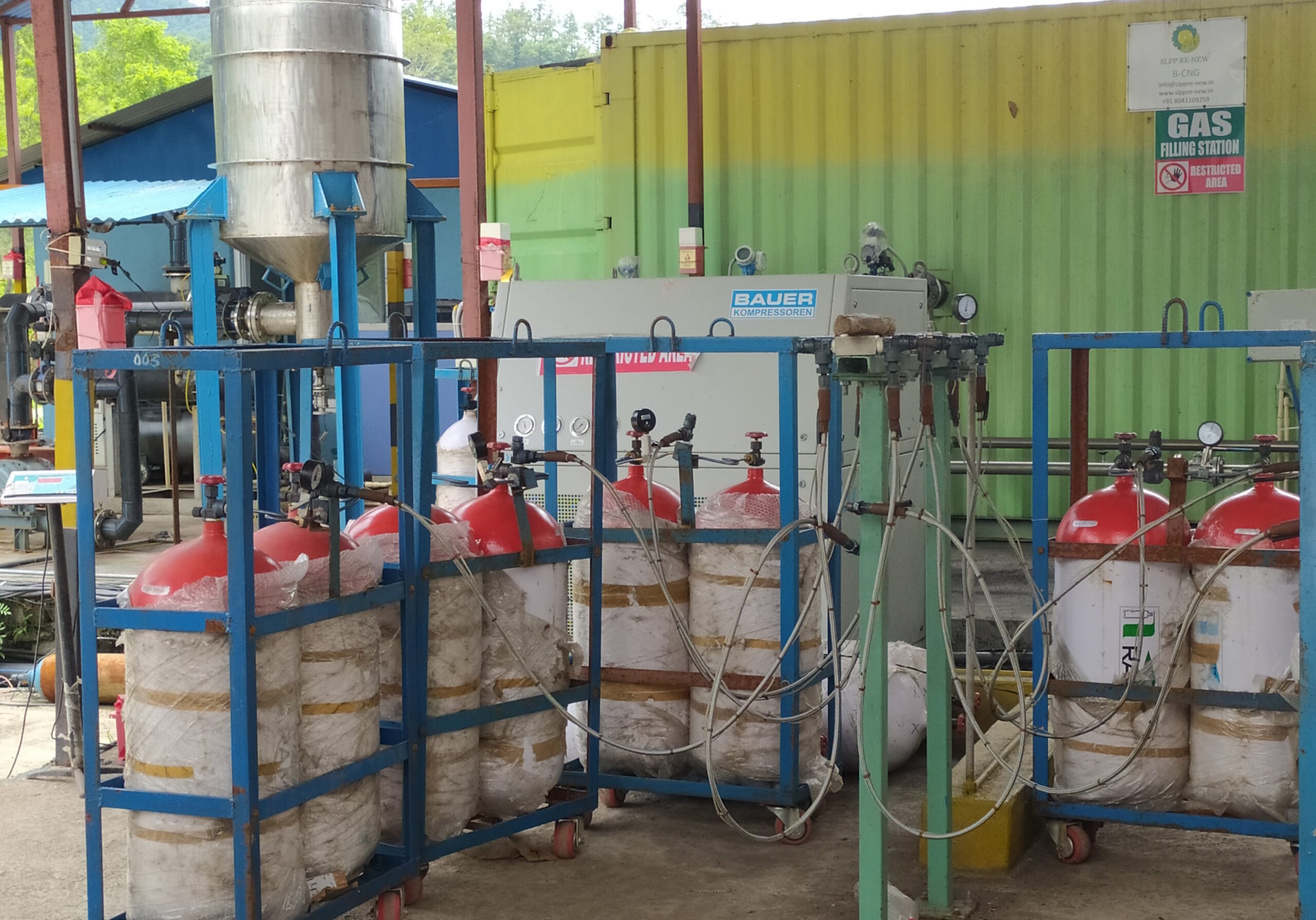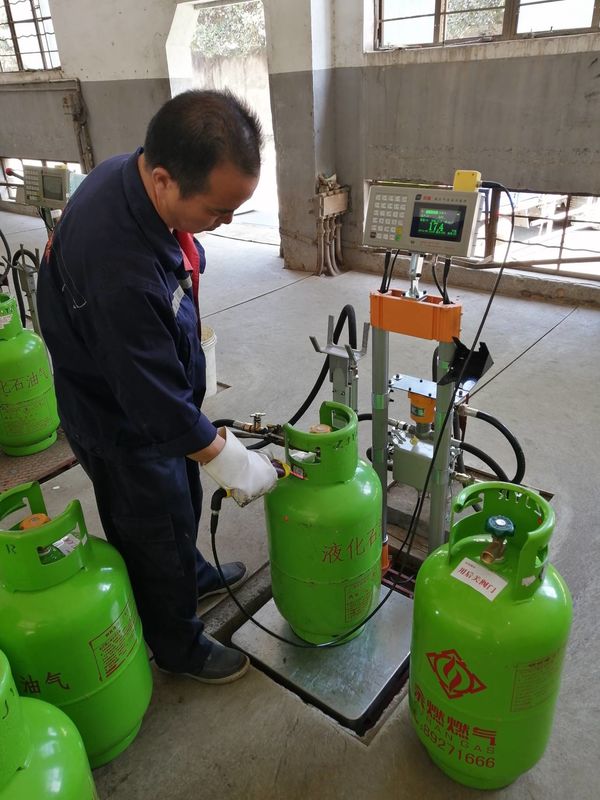Key Takeaways
- Biogas cylinder filling machines are essential for efficiently storing and utilizing biogas.
- These machines help reduce methane emissions by capturing and compressing biogas.
- Choosing the right machine involves considering capacity, compatibility, and cost.
- Safety is paramount; always follow proper procedures and maintenance routines.
- Biogas compression is a sustainable solution that supports energy independence and environmental health.
Importance of Biogas Cylinder Filling Machines
Biogas cylinder filling machines are at the heart of sustainable energy systems. They play a crucial role in transforming biogas into a usable and transportable form, allowing us to store energy efficiently and reduce reliance on fossil fuels. Most importantly, these machines help mitigate methane emissions, a potent greenhouse gas.
By converting biogas into compressed natural gas (CNG), we can utilize it for cooking, heating, and even powering vehicles. This not only helps in reducing carbon footprints but also supports local economies by creating a renewable energy source that can be produced and consumed locally.
Let's explore the multifaceted benefits and applications of these machines in our journey towards a greener planet.

“Waste to value with biogas in Nepal …” from nepalitimes.com and used with no modifications.
Role in Sustainable Energy Solutions
Biogas cylinder filling machines serve as a bridge between waste management and energy production. They enable the conversion of organic waste into a clean, renewable energy source, aligning perfectly with global sustainability goals.
These machines empower communities by providing them with a reliable energy source that is both environmentally friendly and economically viable. Moreover, the use of biogas can significantly reduce dependency on traditional energy sources, paving the way for energy independence.
Reducing Methane Emissions
Methane is a significant contributor to global warming, with a warming potential many times that of carbon dioxide. Biogas cylinder filling machines capture methane from organic waste, preventing its release into the atmosphere. By compressing and storing this gas, we turn a potential environmental hazard into a valuable resource.
Energy Storage and Utilization
Energy storage is a critical component of any renewable energy system. Biogas cylinder filling machines allow for the storage of biogas in a compressed form, making it easy to transport and use when needed. This ensures a steady supply of energy, even during periods when production may be low. For more insights, explore how biogas storage and peak power generation impact the economics of anaerobic digestion.
CNG Compression vs Propane Compression
Understanding Biogas Compressors
To fully appreciate the value of biogas cylinder filling machines, it's essential to understand the compressors that drive them. These devices are responsible for compressing the biogas into a high-pressure form, ready for storage and use.
Main Functions and Mechanisms
Biogas compressors work by increasing the pressure of the biogas, reducing its volume and making it easier to store. They operate on the principle of gas compression, using a piston or rotary screw to compress the gas into a cylinder. For more insights into biogas technology, explore the economics of biogas storage and peak power generation.
It's crucial to select a compressor that matches the specific requirements of your biogas system. This includes considering the pressure levels needed, the volume of gas to be compressed, and the intended use of the biogas.
Key Features for Efficiency
“Efficiency in biogas compression is achieved through advanced technology and careful selection of components. A well-designed compressor not only saves energy but also ensures the longevity of the biogas system.”
When choosing a biogas compressor, look for features such as variable speed control, robust construction, and energy-efficient motors. These elements contribute to the overall performance and reliability of the system.
Furthermore, modern compressors come with safety features like automatic shut-off valves and pressure sensors to prevent over-compression and ensure safe operation. For those interested in the broader implications of biogas technology, you might explore how biogas storage and peak power generation play a role in sustainable energy solutions.
In summary, understanding the intricacies of biogas compressors is vital for optimizing the performance of your biogas cylinder filling system. By selecting the right compressor, you can enhance the efficiency and sustainability of your energy production.

“Biogas Filling Machine – Efficient …” from www.alibaba.com and used with no modifications.
Safety Considerations
Safety is a paramount concern when dealing with compressed gases. Biogas cylinder filling machines must be operated with care to prevent accidents and ensure the integrity of the system.
It's important to distinguish between CNG compression and propane compression, as they involve different safety protocols and equipment requirements. CNG is stored at much higher pressures than propane, necessitating specialized compressors and storage tanks.
Compatibility with Storage Requirements
When selecting a biogas cylinder filling machine, compatibility with your existing storage infrastructure is crucial. The machine must be able to seamlessly integrate with your storage tanks and systems. This ensures that the compressed biogas can be stored safely and efficiently.
Consider the size and pressure ratings of your storage tanks. The compressor should match these specifications to prevent over-pressurization, which could lead to leaks or even tank failure. Additionally, ensure that the materials used in both the compressor and storage tanks are compatible with biogas to avoid corrosion or chemical reactions. For further insights into biogas systems, you can explore different biogas plant mixing techniques.
Budgeting and Cost-Effectiveness
Investing in a biogas cylinder filling machine requires careful budgeting. The cost of the machine itself is just one part of the equation. You also need to consider installation costs, maintenance, and potential upgrades in the future. For more insights on cost management, explore the energy costs involved in biogas plants.
Look for machines that offer a good balance between upfront costs and long-term savings. Energy-efficient models might have a higher initial price but can reduce operational costs over time. Additionally, some governments offer incentives or subsidies for renewable energy investments, which can help offset the costs.
Steps to Safely Operate Biogas Filling Systems
Operating a biogas filling system safely is essential to prevent accidents and ensure the longevity of your equipment. Here are the steps you should follow:
Pre-Filling Safety Checks
Before starting the filling process, conduct a thorough inspection of the system. Check for any signs of wear or damage on hoses, valves, and connections. Ensure that all safety devices, such as pressure relief valves and emergency shut-off switches, are functioning properly.
Proper Filling Procedure
- Start by connecting the compressor to the biogas storage tank securely.
- Open the valves slowly to allow the gas to flow into the compressor.
- Monitor pressure gauges continuously to ensure that the pressure does not exceed the tank's capacity.
- Once the desired pressure is reached, close the valves and disconnect the compressor safely.
These steps are crucial for maintaining system integrity and safety. Never rush the process, as this can lead to mistakes and potential hazards. For more information on biogas storage, explore our detailed guide.
Additionally, always wear appropriate safety gear, such as gloves and goggles, when operating the system. This protects you from potential gas leaks or mechanical failures.

“single cylinder diesel engine fuelled …” from www.sciencedirect.com and used with no modifications.
Post-Filling Maintenance
After completing the filling process, conduct a post-operation inspection. Look for any signs of leaks or abnormalities. Regular maintenance, such as cleaning filters and checking oil levels, will keep your system running smoothly and efficiently.
Document all maintenance activities and inspections. This record-keeping helps in tracking the performance of your system and identifying any recurring issues that may need attention. For detailed guidance on maintaining and inspecting biogas systems, you can refer to this biogas compressor guide.
Real-World Applications and Case Studies
Biogas cylinder filling machines are used worldwide in various applications, from small community projects to large-scale industrial operations. Their versatility makes them suitable for different environments and needs.
Community-Level Biogas Projects
In many rural areas, community-level biogas projects provide a sustainable energy source for households. These projects typically involve the collection of organic waste from farms and households, which is then processed into biogas.
For example, in a small village in India, a community biogas plant was established to convert cow dung into biogas. The biogas is then compressed and stored in cylinders, providing a clean cooking fuel for the villagers. This project not only reduces reliance on wood and coal but also improves air quality and health.
Such projects demonstrate the potential of biogas technology to empower communities and improve quality of life. They also serve as a model for other regions looking to implement sustainable energy solutions.
- Improved air quality and health
- Reduction in deforestation
- Economic benefits from local energy production
Industrial Applications and Production Scale
On an industrial scale, biogas cylinder filling machines are used in large waste management facilities and agricultural operations. These systems handle significant volumes of biogas, requiring robust and efficient compressors.
Industries can benefit from biogas by using it to power machinery or generate electricity. This reduces operational costs and carbon emissions, contributing to corporate sustainability goals.
Government Initiatives in Biogas Utilization
- Subsidies for biogas plant installations
- Research grants for developing biogas technology
- Public awareness campaigns on renewable energy benefits
Governments worldwide recognize the potential of biogas as a renewable energy source. Many have implemented initiatives to promote its use, offering financial incentives and support for research and development.
These efforts aim to reduce national carbon footprints, enhance energy security, and stimulate economic growth through green technologies.
Future Trends in Biogas Compression Technology
The future of biogas compression technology looks promising, with ongoing innovations aimed at improving efficiency and accessibility. Advanced materials and designs are being developed to enhance compressor performance and reduce costs.
Additionally, there is a growing interest in integrating biogas systems with other renewable energy sources, such as solar and wind, to create hybrid energy solutions. This approach maximizes energy production and reliability.
As the demand for clean energy continues to rise, biogas compression technology will play an increasingly vital role in meeting global energy needs sustainably.
Innovations in Equipment Design
Biogas compression technology is rapidly evolving, with innovations focused on enhancing efficiency and reducing costs. New materials and design improvements are making compressors more durable and energy-efficient. For instance, the use of lightweight alloys and advanced seals reduces wear and tear, extending the life of the equipment.
Moreover, digital technology is playing a crucial role in these advancements. Smart sensors and IoT integration allow for real-time monitoring and optimization of the compression process. This not only improves efficiency but also enhances safety by providing early warnings of potential issues.
Impact on Global Energy Markets
Biogas is becoming a significant player in the global energy market. As countries strive to meet renewable energy targets, the demand for biogas and related technologies is on the rise. This shift is creating new opportunities for businesses and investors in the renewable energy sector.
Furthermore, biogas provides a reliable and local source of energy, reducing dependence on imported fossil fuels. This can lead to greater energy security and price stability, benefiting both consumers and economies. For more insights, explore the differences and benefits of biogas and biomass energy.
Potential for Enhanced Environmental Benefits
The environmental benefits of biogas are substantial. By capturing methane emissions, biogas systems reduce greenhouse gas levels and help combat climate change. Additionally, the use of organic waste for biogas production minimizes landfill use and associated emissions.
Beyond emissions reduction, biogas systems can improve soil health by returning nutrients to the land through the use of digested material as fertilizer. This holistic approach to waste management and energy production supports sustainable agricultural practices.

“50G Division ATEX 120kg Cylinder …” from www.lpgcylindertracking.com and used with no modifications.
Conclusion
Biogas cylinder filling machines and compressors are pivotal in harnessing the full potential of biogas as a renewable energy source. By understanding their operation and benefits, we can make informed decisions that contribute to a sustainable future.
As technology continues to advance, these systems will become even more efficient and accessible, further driving the adoption of biogas worldwide. Embracing this technology is not only an investment in energy independence but also in the health of our planet.
“The future of energy lies in our ability to innovate and embrace renewable sources like biogas. By doing so, we can ensure a cleaner, more sustainable world for generations to come.”
Ultimately, the journey towards a greener planet requires collaboration, innovation, and a commitment to change. Biogas technology offers a pathway to achieving these goals, one that is both practical and impactful.
Frequently Asked Questions
Let's address some common questions about biogas cylinder filling machines and their applications.
What are the benefits of compressing biogas?
Compressing biogas allows for efficient storage and transportation, making it easier to use as a fuel source. It reduces methane emissions and provides a renewable energy solution that can replace fossil fuels.
How can I ensure the safety of my biogas system?
Ensure regular maintenance and inspections, follow proper operating procedures, and use safety equipment such as pressure relief valves and emergency shut-off switches. Training for operators is also essential to prevent accidents.
What size of compressor should I choose for my needs?
The size of the compressor depends on your biogas production volume and intended use. Consult with manufacturers or experts to determine the appropriate specifications for your system. For a deeper understanding of the differences and benefits between biogas and other energy sources, you can explore this comparison of biogas vs. biomass energy.
Can biogas be used in the same applications as natural gas?
Yes, biogas can be used in many of the same applications as natural gas, including heating, electricity generation, and as a vehicle fuel. However, it may require purification and compression to meet specific quality standards. Learn more about the renewable natural gas companies that are leading the way in biogas utilization.
- Biogas can power vehicles with the right modifications.
- It can be used for cooking and heating.
- Electricity generation is another common application.
Are there government incentives for using biogas?
Many governments offer incentives such as tax credits, grants, and subsidies to encourage the adoption of biogas technology. These incentives aim to promote renewable energy use and reduce greenhouse gas emissions.
Check with local and national government agencies to explore available programs and support for biogas projects.
In conclusion, biogas cylinder filling machines and compressors are essential tools in the transition to renewable energy. By understanding their benefits and applications, we can make informed choices that support a sustainable future.
Whether you're a renewable energy enthusiast or a business looking to invest in green technology, biogas offers a promising pathway to achieving your goals. Let's embrace this opportunity to make a positive impact on our world.
Biogas cylinder filling machines play a crucial role in the efficient storage and transportation of biogas. These machines ensure that biogas is compressed and filled into cylinders safely and effectively, facilitating its use as a renewable energy source. To understand the broader context of biogas and its applications, it's helpful to explore the differences between biogas and biomass energy, which can provide insights into their respective benefits and comparisons.





